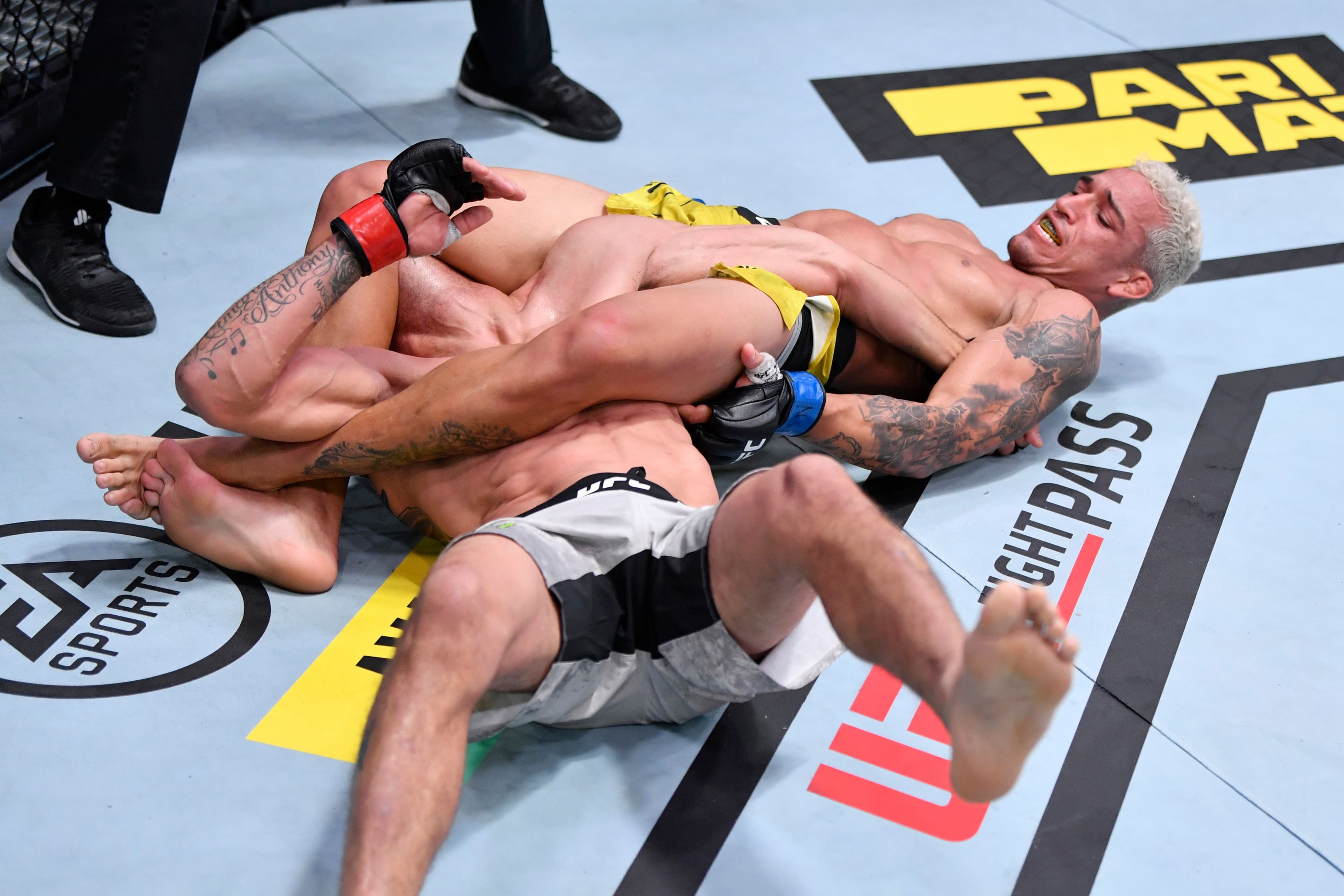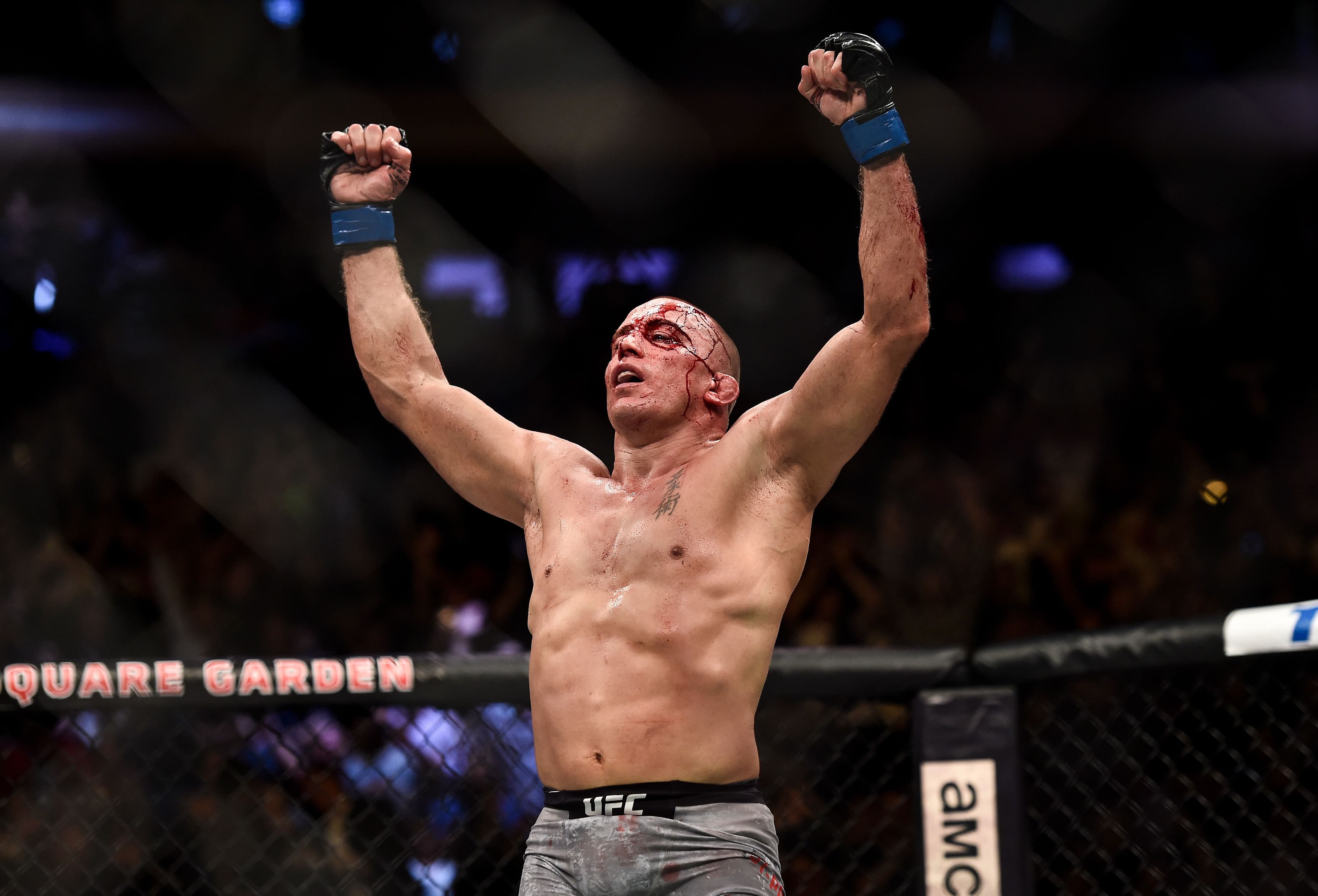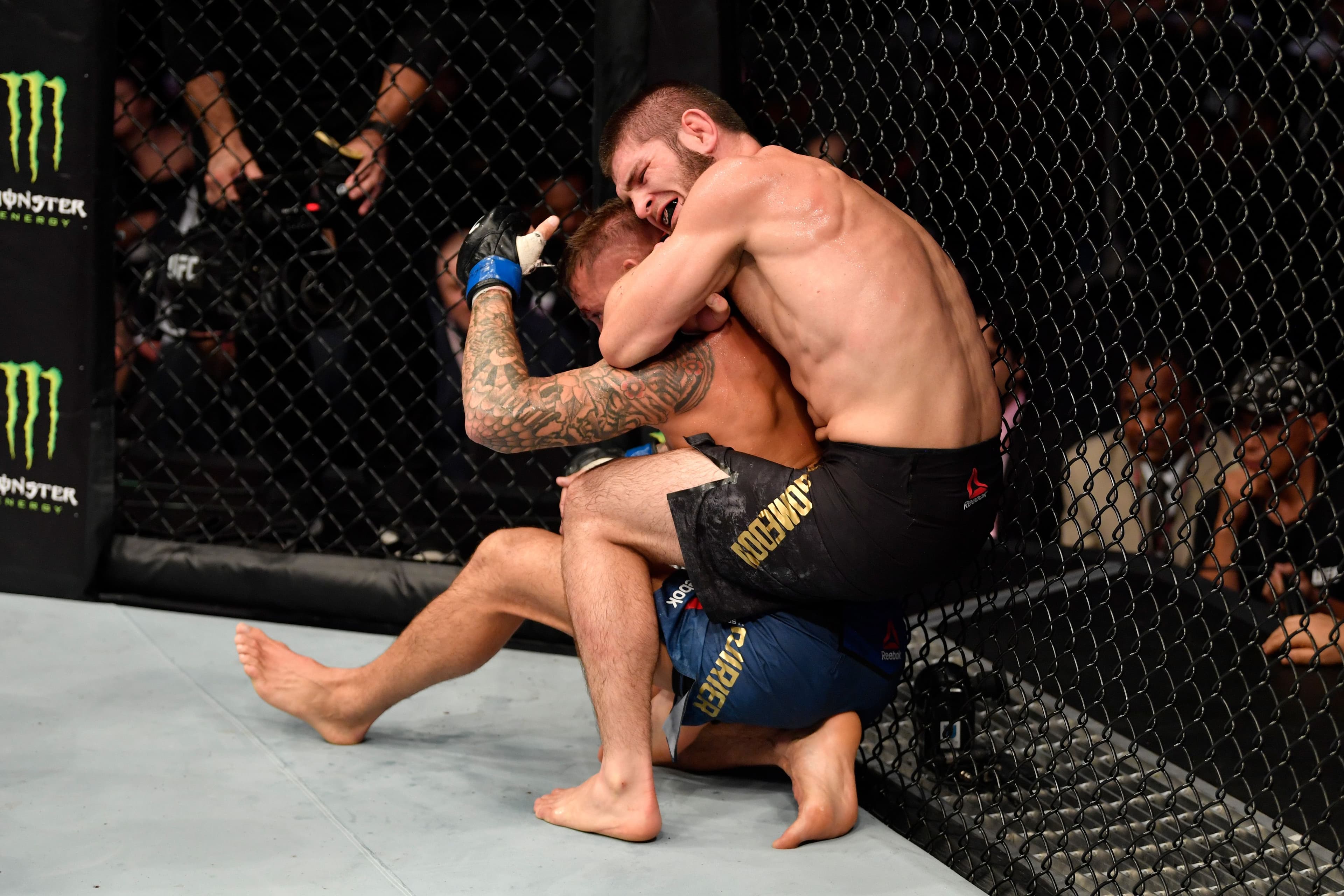MMA
What is Grappling in MMA?
Discover the origins and evolution of grappling in MMA, its key techniques, and learn about the greatest grapplers in history, including the likes of Khabib Nurmagomedov, Georges St-Pierre, and Royce Gracie.

Image Credits: Jeff Bottari/Zuffa LLC
MMA is a combat sport that combines striking and grappling techniques, allowing fighters to utilise a variety of techniques from different martial arts. Among these techniques, grappling is one of the most important skills in MMA, often deciding the outcome of a fight.
Grappling consists of a broad range of techniques used to control or submit an opponent, typically on the ground but also in standing clinches as well.
Grappling Techniques And Its History
Key grappling techniques include takedowns such as single-leg and double-leg takedowns, trips, throws and even special moves such as pulling guard or using an imanari roll.
Clinch work is another key technique where controlling the opponent’s posture while standing is the objective. Sweeps and reversals include changing or improving position from the ground.
Lastly, submissions are another aspect of grappling. These include limb attacks such as armlocks and leglocks, as well as choke techniques.
Grappling is a key aspect of MMA because it offers a way to neutralise an opponent’s striking, control the pace of a fight, and gain a victory either by submission or through ground-and-pound.
Grappling in MMA draws on several martial arts, each contributing different techniques and strategies.

Image Credits: Jeff Bottari/Zuffa LLC/Zuffa LLC via Getty Images
One of those is wrestling. Wrestling is one of the oldest forms of combat, with roots tracing back to ancient Greece and Egypt. In MMA, modern forms like freestyle and Greco-Roman wrestling are commonly used. Wrestling techniques, especially single-leg and double-leg takedowns and positional control, are central to winning an MMA bout.
Brazilian Jiu-Jitsu is one of the most significant contributions to MMA grappling. BJJ was refined in Brazil by the Gracie family. It emphasises ground fighting and submissions, teaching fighters how to defeat larger opponents through leverage, joint and limb locks, and chokeholds. Brazilian Jiu-Jitsu’s effectiveness became globally recognised when Royce Gracie used it to dominate early UFC tournaments in the 1990s, popularising ground fighting in MMA, which is now a key skill among the top fighters in the world.
Judo focuses on throwing and pinning an opponent, along with joint locks and chokeholds. Judo’s focus is on sweeping legs and submission grappling complements other grappling arts.
A Russian martial art that blends all three: judo, wrestling, and striking, is Sambo. Sambo is designed for quick submissions and control. Sambo style fighters often have powerful throws, ground control, and a wide array of submissions. Sambo is super-effective against the cage where fighters can use it to suffocate their opponents and trap wrists or legs. However, it is less effective in the open space.
The Best Grapplers in MMA History
Throughout MMA’s history, several fighters have stood out as elite grapplers, using their skills to dominate opponents in the cage. Here are some of the best grapplers the sport has ever seen.
Royce Gracie

Image Credit: Gregg DeGuire/WireImage
A pioneer in MMA, Royce Gracie was instrumental in demonstrating the effectiveness of Brazilian Jiu-Jitsu in mixed martial arts. Gracie’s victories in the early UFC events showed how grappling could overcome size and strength differences, as he submitted much larger opponents using BJJ. His influence on modern MMA is incredible, as grappling became an essential skill-set in the sport.
Demian Maia

Image Credits: Buda Mendes/Zuffa LLC/Zuffa LLC via Getty Images
A BJJ specialist, Demian Maia is known for his ability to submit opponents at the highest level of MMA. With multiple submission wins in the UFC, Maia’s ground game was so advanced that many strikers avoided engaging him on the mat even when he was hurt. His control and technique made him one of the best grapplers the sport has ever seen. He was particularly known for “the backpack” and his rear naked choke.
Georges St-Pierre

Image Credits: Brandon Magnus/Zuffa LLC/Zuffa LLC via Getty Images
A two-division champion and MMA legend, Georges St-Pierre blended high-level wrestling with Brazilian Jiu-Jitsu and outstanding striking techniques such as the spinning side kick. His ability to out-wrestle some of the best wrestlers in the sport was unparalleled. GSP controlled fights with his takedowns and ground control, making him one of the most dominant champions in UFC history.
Khabib Nurmagomedov

Image Credits: Jeff Bottari/Zuffa LLC/Zuffa LLC via Getty Images
Known for his unbeaten record of 29-0 and dominant grappling, Khabib Nurmagomedov is widely regarded as the greatest lightweights in MMA history. A master of Dagestani Sambo, Khabib’s relentless pressure, control, and ground-and-pound made him nearly impossible to beat.
His wrestling allowed him to dictate the pace of every fight, leading to victories over elite fighters like Conor McGregor, Dustin Poirier, and Justin Gaethje.

Jake Staniland is a sports writer who excels in covering a wide range of sports: football, combat sports and the NFL - All three subjects are his lifelong passions.
Jake is a boyhood Sheffield United fan, which is often a curse that he thanks his family for. His favourite Blades player ever is Billy Sharp